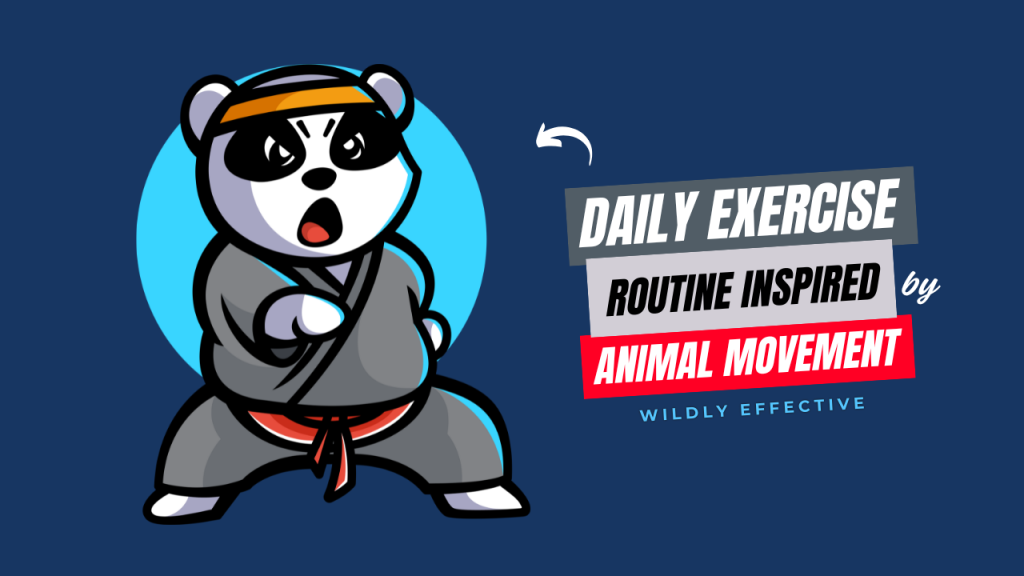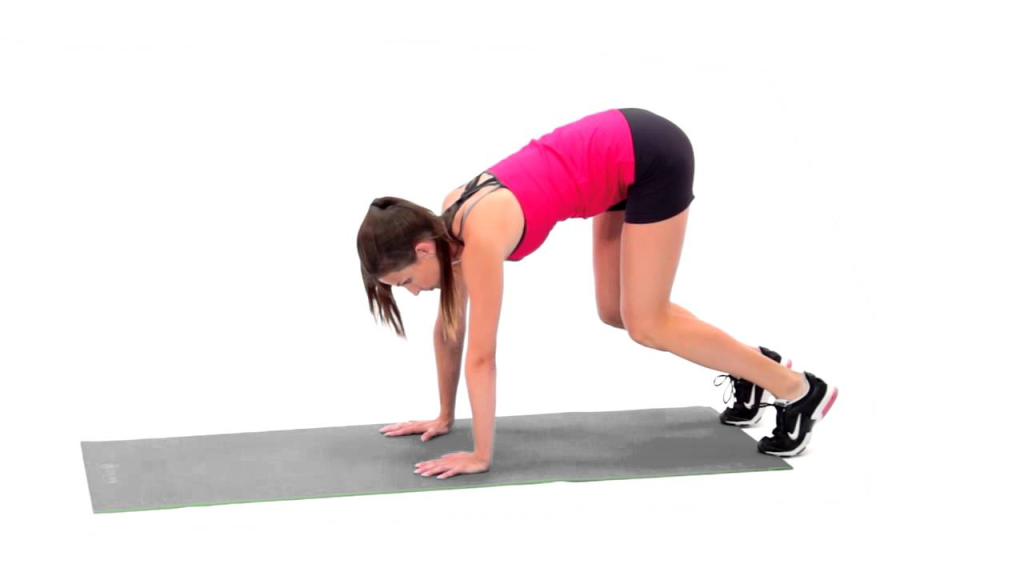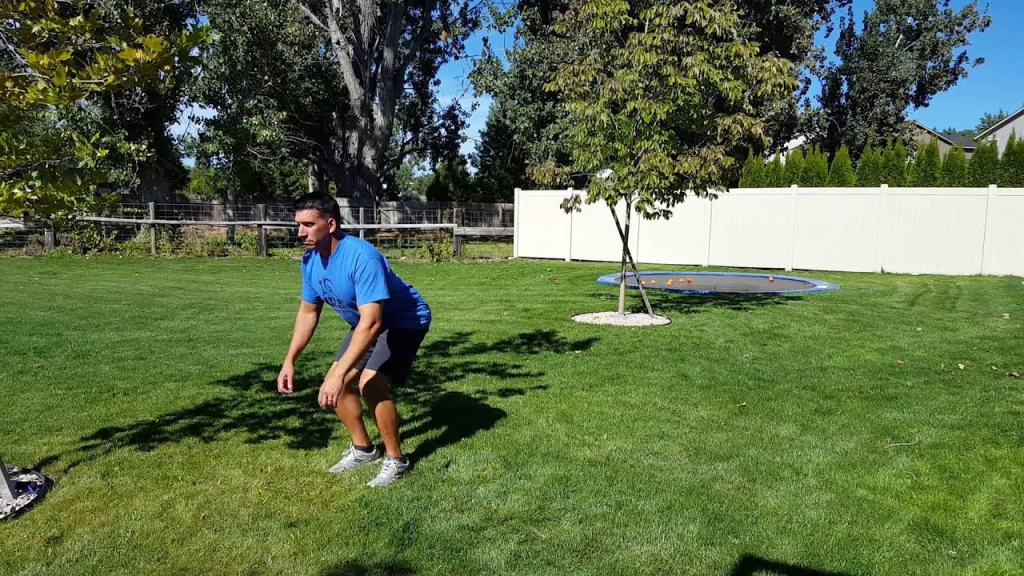What if your best workout partner lived in the wild?
That’s right. Some of the most functional, powerful, and graceful movements come not from machines or gyms — but from animals. From the explosive strength of a gorilla to the agile grace of a cat, the animal kingdom holds time-tested secrets to full-body fitness. This isn’t just about fun — it’s about functional, primal movement that taps into how the human body is meant to move.
Welcome to the world of animal-inspired workouts, where fitness meets nature in its rawest form.

Results After 30 Days of Animal Movement Workouts
| Area of Impact | Expected Change |
|---|---|
| Mobility & Flexibility | Noticeable improvement in joint range of motion and overall fluidity of movement |
| Core Strength | Increased stability, balance, and stronger abdominal and lower back muscles |
| Posture | Better alignment and reduced forward slouch from engaging posture-support muscles |
| Coordination & Balance | Enhanced body awareness and smoother movement patterns |
| Cardiovascular Health | Improved endurance and stamina through dynamic, full-body exercises |
| Mental Focus | Sharper mind-body connection, reduced stress, and a sense of playfulness |
| Injury Prevention | Strengthened stabilizers and joints, reducing the risk of strains and overuse injuries |
| Fat Loss / Muscle Tone | Visible toning, especially in the core, legs, and shoulders (with proper diet) |
| Energy Levels | Sustained boost in daily energy and reduced feelings of fatigue |
| Workout Enjoyment | More fun, engagement, and motivation to stay consistent due to the animal play element |
Why Animal Movements? (The Science Behind the Wild)
Humans once moved like animals — running, climbing, crawling, and crouching to survive. Modern lifestyles, however, have chained us to chairs, screens, and static movements. Animal-based exercises help us reconnect with natural movement patterns, improving:
- Mobility and flexibility
- Core strength
- Joint health
- Balance and coordination
- Overall endurance
Do You Know?
Studies on “quadrupedal movement” (moving on all fours) show increased activation of deep core muscles compared to traditional ab workouts.
Wildly Effective: The Daily Animal Movement Routine
This routine takes only 20–30 minutes a day, requires no equipment, and can be done anywhere — from your living room to the park.
Let’s break it down into phases:
1. The Warm-Up Jungle (5 Minutes)
Bear Reach & Shoulder Rolls (1 min)

Gently wake up your spine, shoulders, and hips.
- Start on all fours.
- Reach one arm forward while shifting hips back.
- Alternate sides. Add slow shoulder circles.
Cat-Cow Flow (1 min)

Inspired by feline flexibility.
- Arch and round your spine while breathing deeply.
- Enhances spinal mobility and core engagement.
Frog Squats (1 min)

Open the hips like a leaping frog.
- Feet wider than hips, squat low, hands in prayer.
- Gently rock side to side.
Quadruped Wrist Rolls (1 min)

Protect those wrists before the wild begins.
Monkey Toe Taps (1 min)
Alternate tapping toes behind you while in a crouched monkey pose.
2. The Core Animal Circuit (15 Minutes)
Do 3 rounds. Rest 1 minute between rounds.
Bear Crawl (1 min)

- Keep knees low, and back flat.
- Crawl forward and backward. Benefits: Core strength, and shoulder stability.
Gorilla Shuffle (1 min)

- Squat low and use your hands to shift from side to side. Benefits: Glutes, quads, cardio, lateral movement.
Tiger Push (1 min)

- Think push-up meets yoga.
- Dive chest low, scoop upward. Benefits: Full-body strength, and spine mobility.
Cobra Raises (30 sec)

- Lie on your belly, lift your chest slowly like a cobra rise. Benefits: Strengthens lower back and posture.
Frog Hops (1 min)

- Jump forward in a squat, and land softly. Benefits: Explosive strength, cardio.
Interesting Fact:
Frogs can jump up to 20 times their body length. While we won’t match that, explosive frog jumps ignite fast-twitch muscle fibers!
3. The Jungle Flow Cool Down (5–10 Minutes)
Lizard Stretch

- Step one foot outside your hand in a low lunge. Hold and switch.
Elephant Sway
- Bend forward, let your arms swing side to side like a trunk. Gentle spinal decompression.
Resting Crocodile
- Lie on your stomach, arms bent under your chin. Breathe deeply for recovery.
Deep Ape Squat Hold
- Sit in a low squat. Use elbows to push knees outward. Focus on deep belly breathing.
Myth Buster: “Animal Moves Are Just for Kids or Yoga Classes”
False!
Elite athletes, military trainers, and mobility specialists all incorporate primal movement patterns into their routines. These exercises target muscles and joints in ways traditional training often misses — building functional strength over aesthetic fluff.
Benefits You’ll Feel (and See)
✔️ Improved posture
✔️ Decreased joint pain
✔️ Heightened body awareness
✔️ More fluid, graceful movement
✔️ Engaged core without crunches
✔️ Fun workouts that fight boredom
Did You Know?
Children naturally explore animal-like movement during play — and it’s key to their neuromuscular development. Adults benefit in the same way, regaining mobility lost to sedentary habits.
Tips for Going Wild Daily
- Start slow: Even 10 minutes daily can rewire movement patterns.
- Focus on form over speed. Quality > quantity.
- Stay barefoot or wear minimalist shoes when possible for better grounding and joint feedback.
- Combine with nature walks or hiking for maximum primal synergy.
Final Thoughts: Return to the Wild Within
You don’t need a gym, equipment, or complex routines to get strong, agile, and pain-free. Sometimes, the smartest fitness plan is also the most instinctive. Animal-inspired movement reminds us that health is rooted in natural, playful motion — not in reps, but in rhythm.
So tomorrow morning, skip the treadmill. Go bear crawl across your living room. Lunge like a lizard. Leap like a frog. Your body will thank you — and your inner beast will roar in approval.
Frequently Asked Questions (FAQs)
Are animal movement workouts suitable for beginners?
Yes! Most animal-inspired movements can be scaled for any fitness level. Start slow, focus on form, and modify intensity as needed. Beginners can reduce the range of motion, reps, or time per movement.
How often should I do this routine?
Daily practice is ideal, but even 3–4 times per week can deliver noticeable benefits. Consistency is key. The routine is designed to be low-impact yet highly effective, making it safe for frequent practice.
Can this routine replace traditional strength training?
It depends on your goals. Animal movement routines improve functional strength, mobility, and endurance. While they can complement or even replace traditional workouts for many, bodybuilders or those training for maximum hypertrophy may want to combine both approaches.
Will I lose weight with this workout?
If combined with proper nutrition, yes. This routine elevates your heart rate, builds muscle, and boosts metabolism — all of which support healthy fat loss.
Can kids or seniors do this routine?
Absolutely! With proper supervision and modifications, animal movement exercises are excellent for all age groups. They’re playful, engaging, and help develop balance, coordination, and strength at any age.
What’s the best time of day to do this workout?
Anytime! Morning sessions can energize you for the day, while evening practice helps release tension. Listen to your body and choose the time that fits your schedule and energy levels.





